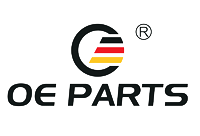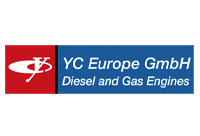Shentou provides on site services
such as factory audit and pre shipment
inspections in China
such as factory audit and pre shipment
inspections in China
Shentou Services
Critical Elements of Machining Process
The automobile spare parts we purchase typically consist of many systems based on system classifications, such as engine, chassis, braking, suspension, steering, electrical, etc. The production of parts for each system requires different techniques depending on different product applications and their technical and quality requirements. The techniques include casting, die casting, forging, welding, stamping, heat treatment, and machining, etc.
Ferrous metals are used as raw materials to produce many parts. Blanks are first manufactured with processes of forging, casting and die-casting in the early production stage. The blanks are then machined to become finished products that meet designed requirement through the machining process.
When international buyers purchase automobile parts that have been machined, they need to watch for the suppliers’ machining process capabilities from the perspective of quality management, as these capabilities are critical to ensure the parts comply with the technical and quality requirement.
We will briefly describe each of the eight key aspects of process from the point of audit questions: people, tooling, material, process control, environment, testing, recording and marking. For buyers with limited knowledge of machining, the information will help you make sound decisions in the qualification of your machining suppliers.
People
○ Have the operators gone through pre-job training and been determined to have the required skills?
○ Do the operators understand what the special focuses are for this process?
○ Do the operators know what items should be inspected and if they are able to properly use the measuring instrument for testing?
○ Do the operators carry out the productions, first-piece inspections and self-inspections according to the operation/inspection instructions?
○ Are the operators aware of the fixed item inspection requirement?
○ Do the operators know how to handle defective parts during productions? Are procedures available and in place?
○ For operators using the X-R control chart process, do they understand the applications of the control charts?
Machines and tooling
○ Are the machines and tooling checked daily according to the requirements?
○ Are preventive maintenance plan and parts plan available?
○ Are there statistic reports on the equipment operation rate? Is predictive maintenance implemented?
○ Are machining parameters for the CNC equipment under supervision?
○ Are fixtures and tooling checked or changed periodically and placed on-site according to standard?
○ Are tool change plans available? How the tools are managed? How often are the tools replaced? Any records?
○ Are there fixed schedules of calibrations or external appraisals for the testing equipment? Are the external organizations qualified with certifications?
Materials
○ Are the material codes and specifications on the production flow form the same as the ones used on-site?
○ Are critical and important raw and auxiliary materials on-site tested and marked with approvals?
○ Are materials in use monitored and batch-managed according to first-in-first-out (FIFO)?
○ Are products properly placed in separate locations and clearly marked before and after each process?
○ Are traceability marks placed on processed products?
○ Are error-proofing measures in place for parts processed by shared machines? Are there non-production parts on-site?
○ Are unqualified parts stored in containers or areas marked with “Defective Parts”?
Process Control
○ Are technical documents in place with every process? Do the documents include the process parameters (machining allowance, positioning method, tool speed, feed rate, etc.), the equipment and tooling to be used, the quality requirement, the critical control points, and the process inspection standards (inspection items, frequencies, methods, etc.)?
○ Check to see the document expiration dates for each process and whether the documents have been timely updated for each process and if they are consistent with the control plans.
○ Are work and inspection documents available on-site at each relevant workplace? Are self-check forms also available and have they been completely filled in? Are the records of finished products inspection also complete?
○ Are production plans on-site? How batch management system is implemented with batch circulation cards?
○ Are the control lines on the process control charts reasonable, accurate and meeting the control requirements?
○ Have project process cards been updated timely with any previous changes?
○ Has on-site visual management included projects that have had quality issues before?
○ Are emergency response plans in place with effective measures to deal with emergencies?
Environment
○ Is the working environment neat and tidy, and are the on-site materials, products, tooling, tools, and containers clean with fixed location management?
○ Are the operators aware of the requirements for civilized production and safe production and their implementation? Are they conscious of the environment?
○ Is visual management implemented on-site? Are unprocessed/processed and qualified/unqualified parts separated?
○ In the physical-chemical / physical properties (performance) testing laboratory, are various types of reagents identified and placed in fixed locations? Do the metallographic and measuring rooms have temperature and humidity meters and the data shown meet the temperature and humidity requirements?
○ Does the working environment meet the requirements, and whether there are artificial lightings for places with poor light?
○ When the working conditions generate noise, dust, exhaust gas, sewage, flammables, explosives, and solid waste, are there disposal measures? Are there emergency response and preventive plans and measures?
○ When there are hazards conditions affecting occupational health and safety, are there sufficient site identifications with markings? Is the fire equipment intact and effective, and the passage is clear? Are there emergency response and preventive plans and measures?
Testing & Analysis
○ Are measuring and gauging tools available on-site? Are the tools periodically tested to be within acceptable limits?
○ Check the log book of the on-site tools to determine if the records shown are within the acceptable limits and if Measurement System Analysis (MSC) has been conducted.
○ Have the process inspectors rigorously verified and properly recorded first article inspections, process inspections, and process records according to the inspection instructions?
○ Are operators immediately notified by the inspectors and instructed to make corrections when deviations are discovered in process parameters or product requirements?
○ Are testing done and properly recorded by inspectors and operators on process characteristic parameters?
○ When defective items are discovered, are they properly marked, separated, evaluated and processed according to the requirements? Are major quality issues immediately reported? Check 8D reports if necessary.
○ Are quality control charts used for key processes? Is Statistical Process Control (SPC) applied?
○ Have out-of-tolerance products been analyzed and corrective measures provided?
○ Are all issues reported previously corrected and closed?
Marking
○ Check the on-site production process to see if unique identifications have been applied to all products based on the “Management Procedures for Marking & Traceability”, and if the markings are indeed of uniqueness and if the unique markings are actually used;
○ Are materials identified by batch marking with records of traceability?
○ Are on-site product storage areas separated into qualified product, untested, non-conforming parts, and rejected parts areas? Are these areas clearly identified by signs and separation lines?
○ Are product inspection status clearly marked as passed, untested, non-conforming, to be scrapped, to be reworked, to be repaired, or to be accepted on deviation? Are signs for first-piece inspection, routine inspection and passed cleared marked?
○ Are key equipment and process clearly identified?
Recordation
○ Spot check the process flow cards, job records, first-piece and in-process inspection records and verify if they are clear, complete, accurate and traceable;
○ Spot check incoming and outgoing inspection records to verify if they follow the requirements, are complete and the data comply with inspection criteria;
○ Check on-site statistical data and summary charts to verify the proper use and management of the analysis, corrective actions and validation records for nonconformity items;
○ Verify if all records are regularly sorted, marked and filed, and all files are stored for easy retrieval;
○ Verify if all files are stored based on the required retention period and discarded according to proper procedures.
This article was first published in August, September, October, November & December of 2018, and January, February & March of 2019
keywords:Product Development Project Management Services Post COVID-19 Factory Audits







